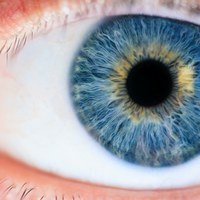Medical devices: biocompatibility testing in ophthalmology
Cellular cytotoxicity testing and analysis on biological samples from clinical studies performed at the Laboratory of Ocular Surface Analysis and Translational Research, head Prof. Piera Versura. The work focuses on preclinical models of specific versatility and utility with the goal of evaluating the various aspects associated with medical device function at the site of use.

Biocompatibility testing is a key part of the medical device (MD) approval process.
Together with the Laboratory of Nephro-vascular Pathology (mettere link), we work in the Ocular Surface Laboratory (mettere link) to improve medical devices by combining the expertise, in the two fields of application, through collaborative efforts the strengths of academic institutions and industrial partners.
Analyses on animal and human samples as part of clinical trials are also offered.
Presentation
Our Service performs Tests for in vitro cytotoxicity (basic test and integrated test with hypoxic stress, hyperosmolarity stress, oxidative stress, and inflammatory stress). These tests provide the general requirements for evaluating the cytotoxic potential of a medical device, with the goal of assessing the compatibility of a device or material with a biological system.
The service also performs analyses on biological specimens in the context of clinical studies, to evaluate biological markers in cells and tears sampled from subjects enrolled in the study. In particular, we discuss conjunctival cytology examinations, tear analysis (total protein amount and quantitative levels of lysozyme, lactotransferrin, lipocalin A, albumin) and ultrastructural analysis (transmission and scanning electron microscopy).
In vitro cell models
The following cell lines are in use, specific for the committed studies:
human vascular endothelial cell line (HUVEC)
human aortic smooth muscle cells (HAOSMC)
lineage glia cells (human retina) (MIO-M1)
human corneal epithelial cells (ATCC CRL-11516)
human conjunctival fibroblasts - primary
human conjunctival epithelium cell line (ATCC CCL-20.2)
retinal pigment epithelium cell line (human retina) (ARPE-19)
Co-culture models (direct and indirect contact) can be set up upon request for specific research purposes.
In vitro tests
- Cytotoxicity - direct and eluted contact
ISO 10993-5:2009 "Biological evaluation of medical devices Part 5: Tests for in vitro cytotoxicity" provides general requirements for evaluating the cytotoxic potential of a medical device with the objective of assessing the compatibility of a device or material with a biological system.
- Hypoxic stress - performed by the addition of CoCl2 or in a hypoxic chamber
- Hyperosmolarity stress-performed by the addition of NaCl reaching varying degrees of mOsm/L in the medium
- Oxidative stress - by the addition of H2O2
- Inflammatory stress - by addition of TNF-α and IL-1β
Qualitative and quantitative evaluation methods are available for each applied model, and are estimated based on the complexity of the experiments:
- Morphologic evaluation by light, fluorescence, transmission and scanning electron microscopy, immunocyte/histochemistry assays
- Cytofluorometry for phenotype control
- MTT vitality assays, MTS, crystal violet
- RT-qPCR molecular biology assays for identification of biomarkers identified on specific pathways
- ELISA assays on culture media
- Incucyte® wound healing and apoptotic signaling assays
Animal models
Dry eye disease-induced by a controlled environment chamber (CEC) that modulates specific conditions of airflow, humidity, and temperature to produce hyperevaporative stress.
Analysis on biological samples from clinical trials
Laboratory for the collection and detection of animal or human samples.
The activity described below may be commissioned as part of clinical trials, to evaluate biological markers in cells and tears taken from subjects enrolled in the study.
Conjunctival cytology
- Goblet cell analysis (morphology and immunohistochemistry on MUCs)
- Cytofluorimetry for identification of membrane targets (HLA-DR)
- RT-qPCR molecular biology analysis for identification of biomarkers identified on specific pathways
Tear analysis
- major protein profile (amount of total protein and quantitative levels of lysozyme, lactotransferrin, lipocalin A, albumin)
- inflammatory cytokines, to identify IL-1β, IL-6, IL-8 (CXC-L8), and TNFα panel
Ocular surface microbiome
- metagenomic (NGS) analysis of eye samples (microbiome profiles)
- biostatistics analyses, diversity indices
Rates
Rates are differentiated according to the type of test or analysis required and have been determined by taking into account the cost of consumables used (reagents), the cost of equipment maintenance and use, and the man time devoted to the activity.
To receive the updated fee schedule, send an email to the Responsible of the service.
CONTACTS
-
Associate Professor
Dipartimento di Scienze Mediche e Chirurgiche - DIMEC
Via Massarenti 9
Bologna (BO)
Tel: +39 051 2142850
Fax: +39 051 636 2 846
-
Pasqualina Salvatore
Area dei Funzionari - Settore amministrativo - gestionale
SAM - Settore Ricerca - Ufficio Contratti e convenzioni con enti e imprese
Via Massarenti 9 - Pad. 11
Bologna (BO)
Tel: +39 051 20 9 2967